Originally published by Devin Tuttle, ECO Canada for our research community
On October 7, 2020, Ottawa announced the next steps towards the Government of Canada’s current objective of achieving zero plastic waste by 2030.
The updated legislation includes a ban on single-use plastics, proposes a national plan to recover and recycle plastics, and holds companies responsible for the plastics they release into the marketplace.
Under the single-use plastics ban, plastic straws, stir sticks, checkout bags, six-pack rings, cutlery, and takeout containers made from hard to recycle plastics will be prohibited by the end of 2021.
These items were selected based on the:
- the frequency they are found in the environment
- recyclability of polymers
- availability of sustainable alternatives
As an additional step in managing plastic products, the federal government intends to add plastic manufactured products to Schedule 1 of the Canadian Environmental Protection Act. By scheduling “plastic manufactured products,” the government can address plastic pollution through a regulatory mechanism without having to table new legislation, ensuring immediate environmental preservation and protection.
The steps identified in the Canada-Wide Action Plan on Zero Plastic Waste intend to advance the circular economy for plastics.
Costs and benefits of the Canada-wide Action Plan on Zero Plastic Waste
Overall, the federal government’s commitment to managing plastic waste could generate billions in government revenue while creating approximately 42,000 jobs across Canada through new innovative solutions.Job creation and innovation
In addition, establishing minimum content standards for recycled materials in plastic production supports the development of a market for recycled plastics, making them more cost-competitive with new materials.
The increase in demand for recycled plastics could also spur innovation in recycling technologies while intensifying investments in operations around a circular plastics economy.
While these changes by the federal government could create job growth, innovation in new infrastructure, and decrease the carbon footprint, all policies have costs and externalities associated with implementation.
International trade of recycled materials
The international trade market around recycled materials also underwent a significant change in response to a 2017 Chinese policy dubbed the “National Sword”, which significantly reduced the rate of imported recycled materials to China.
As China refused to be the “world’s recycling bin”, Canadian exports of scrap plastic decreased by one-fifth.
Changes to international trade markets forced Canadian municipalities and recycling companies to substantially change operations – increasing human and machine capital to offset the increased supply of plastic waste.
This sudden change to the market landscape led to a 40% increase in the cost of recycling in Canada, according to the Recycling Council of Alberta.
A study by Deloitte and Environment and Climate Change Canada shows that approximately 9% of plastic waste generated in Canada each year is recycled. With the inability to offset plastic waste by exporting it to other countries, plastics intended for recycling often end up in Canadian landfills.
Cross-contamination of plastics
Differences in plastics material and the cross-contamination of material further add to the complexity of the problem.
The contamination level of materials is a contributing factor to the increased cost of recycling, requiring human capital to sort through materials.
Extended producer responsibility (EPR)
Standards for recycled content would increase demand for recycled plastics at a time when new plastics are cheaper to produce due to the decline in petroleum prices.
Extended producer responsibility (EPR) programs would increase the burden on producers, obliging them to manage, collect, and recycle waste on the products they produce or sell.
While an EPR would make producers responsible for their product waste, some plastics are not recyclable.
The introduction of recycled content thresholds attempts to mitigate this concern and is dependent on Canada’s ability to impose standards on large multinational corporations.
The tragedy of the commons
Like other policies focused on combating climate change, Canada may encounter the tragedy of the commons. As companies begin to incorporate environmental impacts into their cost calculations, there is the potential for costs to extend to consumers. Unfortunately, the most vulnerable communities are likely to be affected the most.
The ability to shift away from low-cost single-use goods towards reusable and sustainable alternatives requires a level of disposable income, or a willingness to change a household budget away from other goods and services. Consumers must be mindful to evaluate their purchasing decisions and reconsider their contribution to a growing waste problem.
EPR programs have the potential to counteract the looming recycling challenge in Canada by shifting responsibility onto multinational corporations, ensuring producers bear the cost of waste products rather than consumers or municipalities.
Summary of Canada’s move to zero plastics waste

As Canada begins the transition towards a circular plastics economy, we must recognize that all policies come with costs. The recent policy announcement signals a Government commitment to a green future, but that commitment may burden the backs of consumers.
To effectively move towards a circular economy for plastics, there must be significant investment in Canada’s recycling sector – one that supports long-term sustainability in the petrochemical sector.
Creating new plastics is a highly carbon-intensive process. Nevertheless, it remains a more cost-effective alternative to recycling plastics into new products.
With the creation of a market for recycled products, the comparative advantage for new plastics would decrease, contributing to future growth in Canada’s recycling sector.
Additional Reading:
- Canadian Environmental Protection Act (CEPA). Ottawa, CA. 1999.
- Environment and Climate Change Canada, A proposed integrated management approach to plastic products, Discussion Paper. Ottawa, CA. October 7, 2020.
- Canadian Council of Minister of the Environment, Canada-Wide Action Plan on Zero Plastic Waste: Phase 2, Ottawa, Canada. July 23, 2020.
- Standing Committee on Environment and Sustainable Development, Canada, The Last Straw: Turning the Tide on Plastic Pollution in Canada, House of Commons, June 2019.




